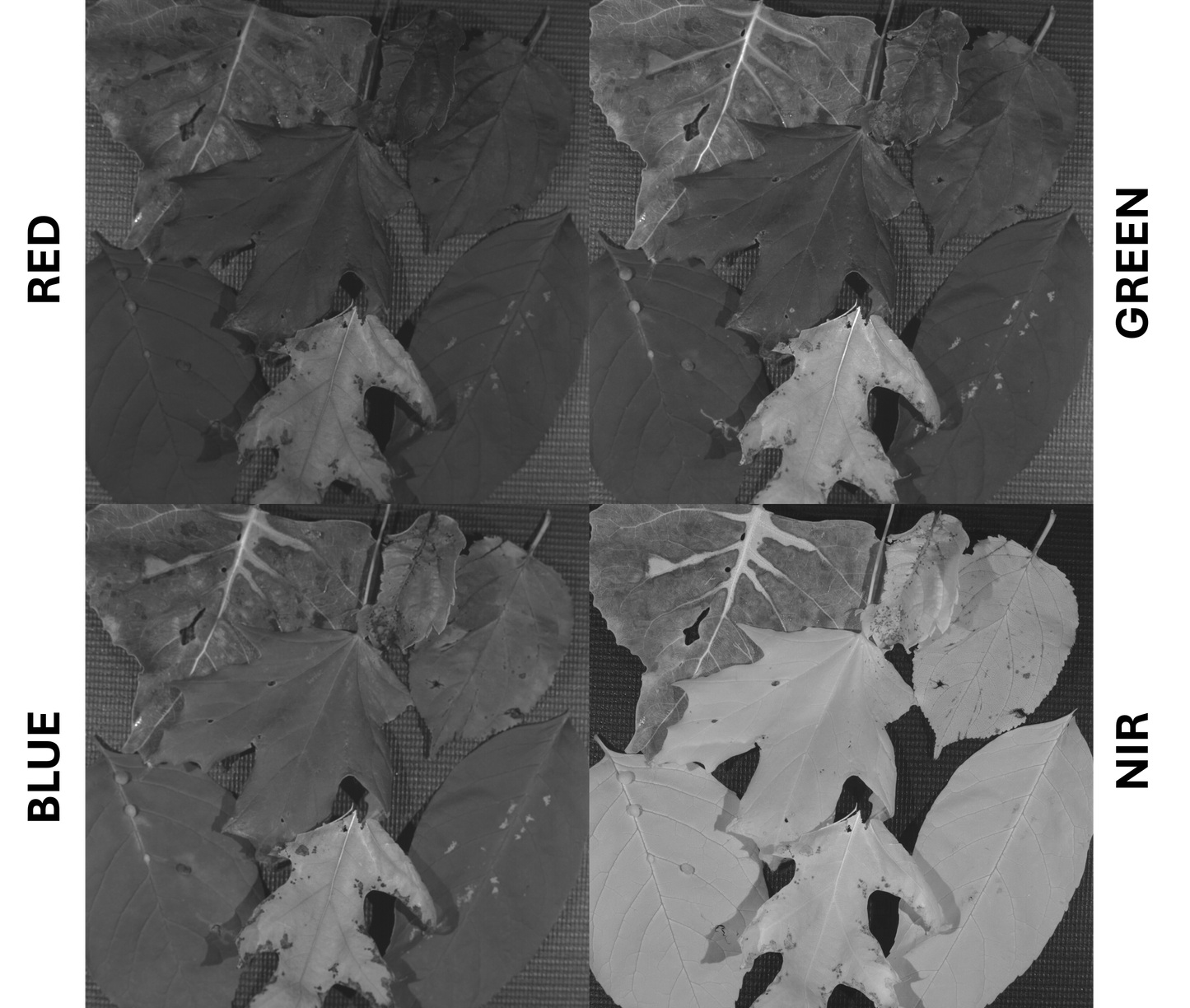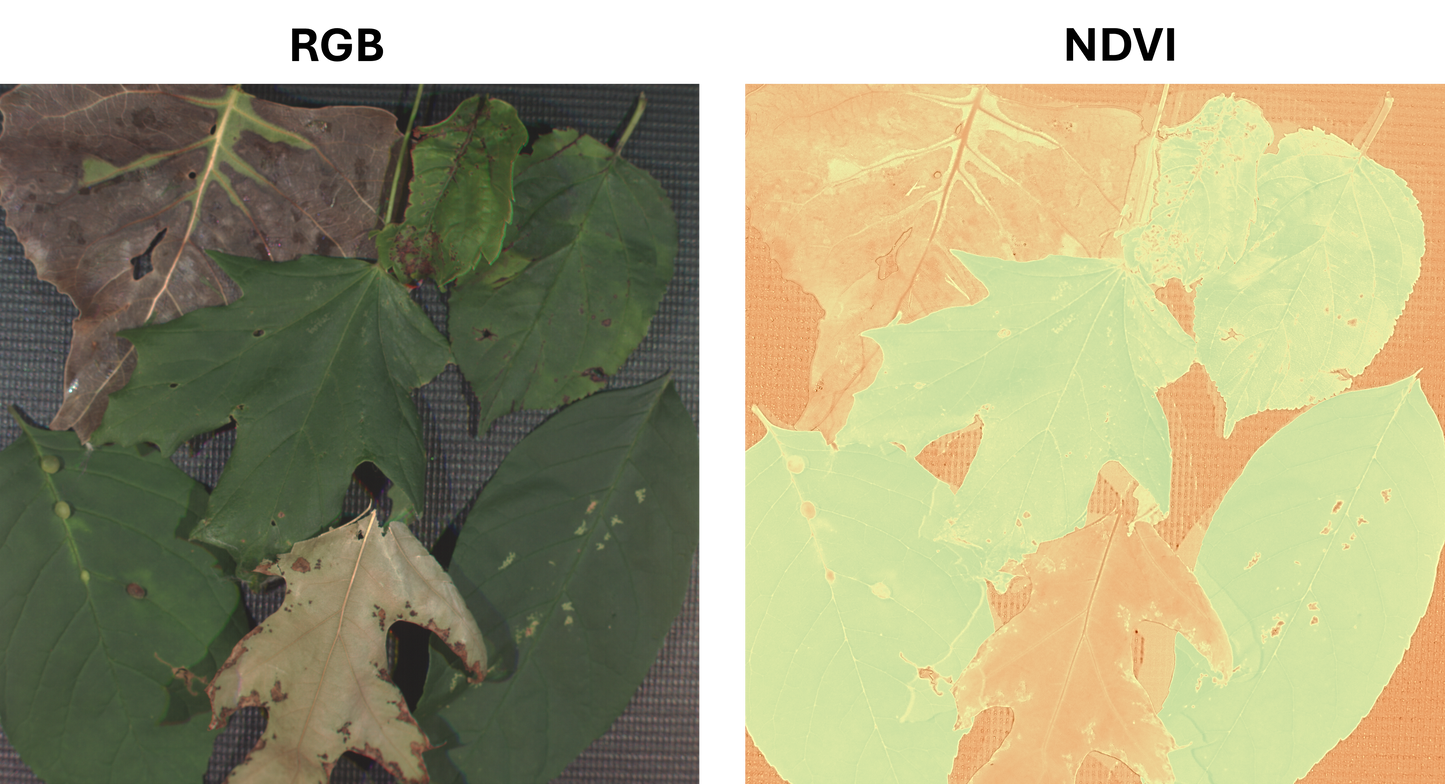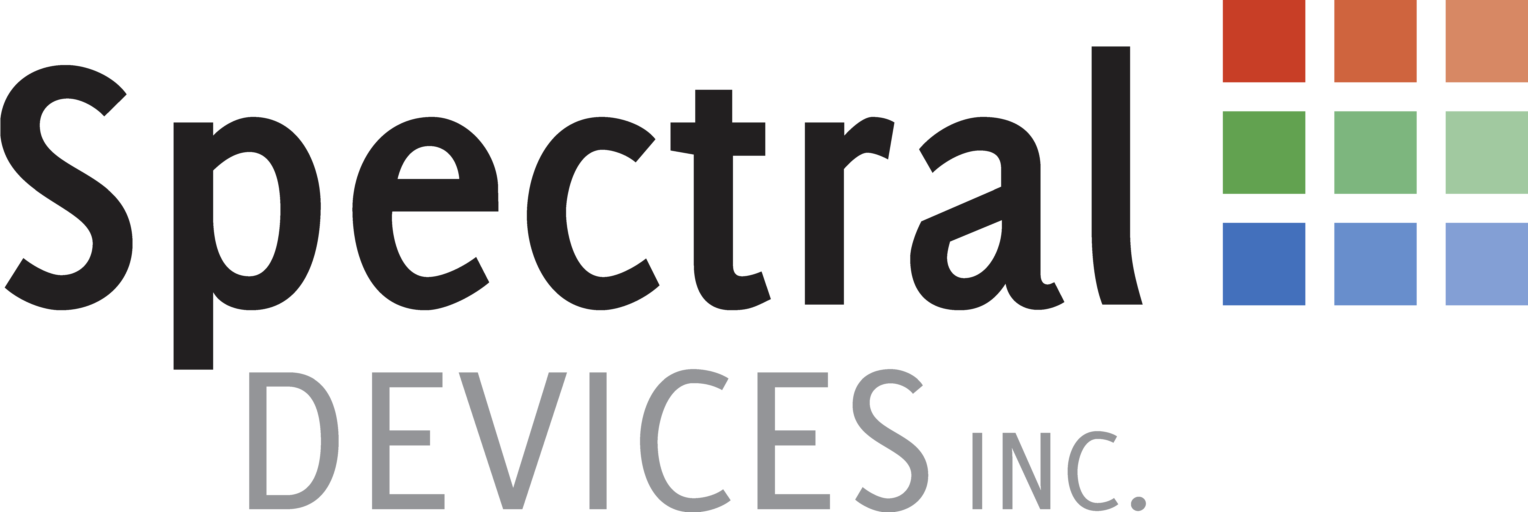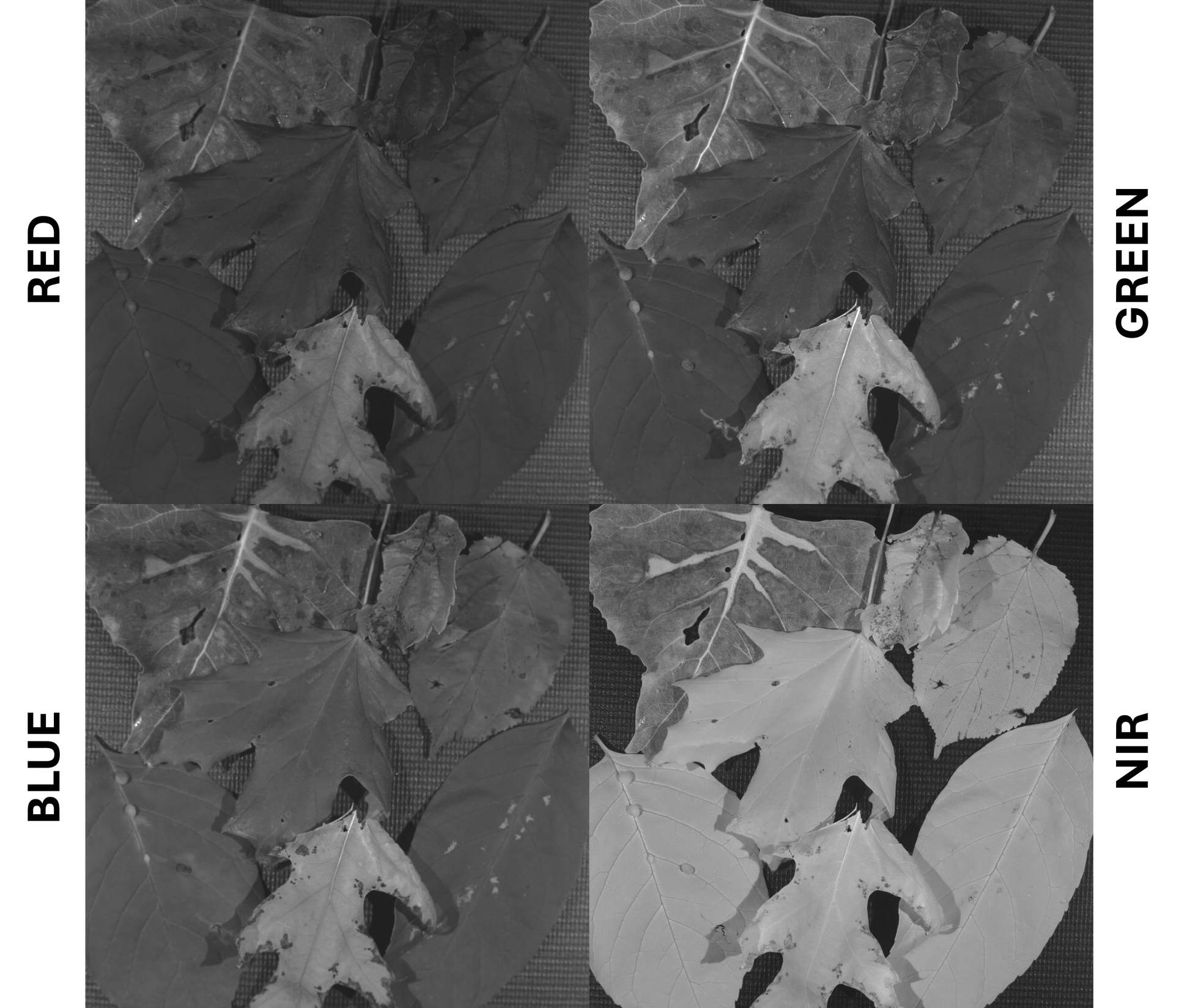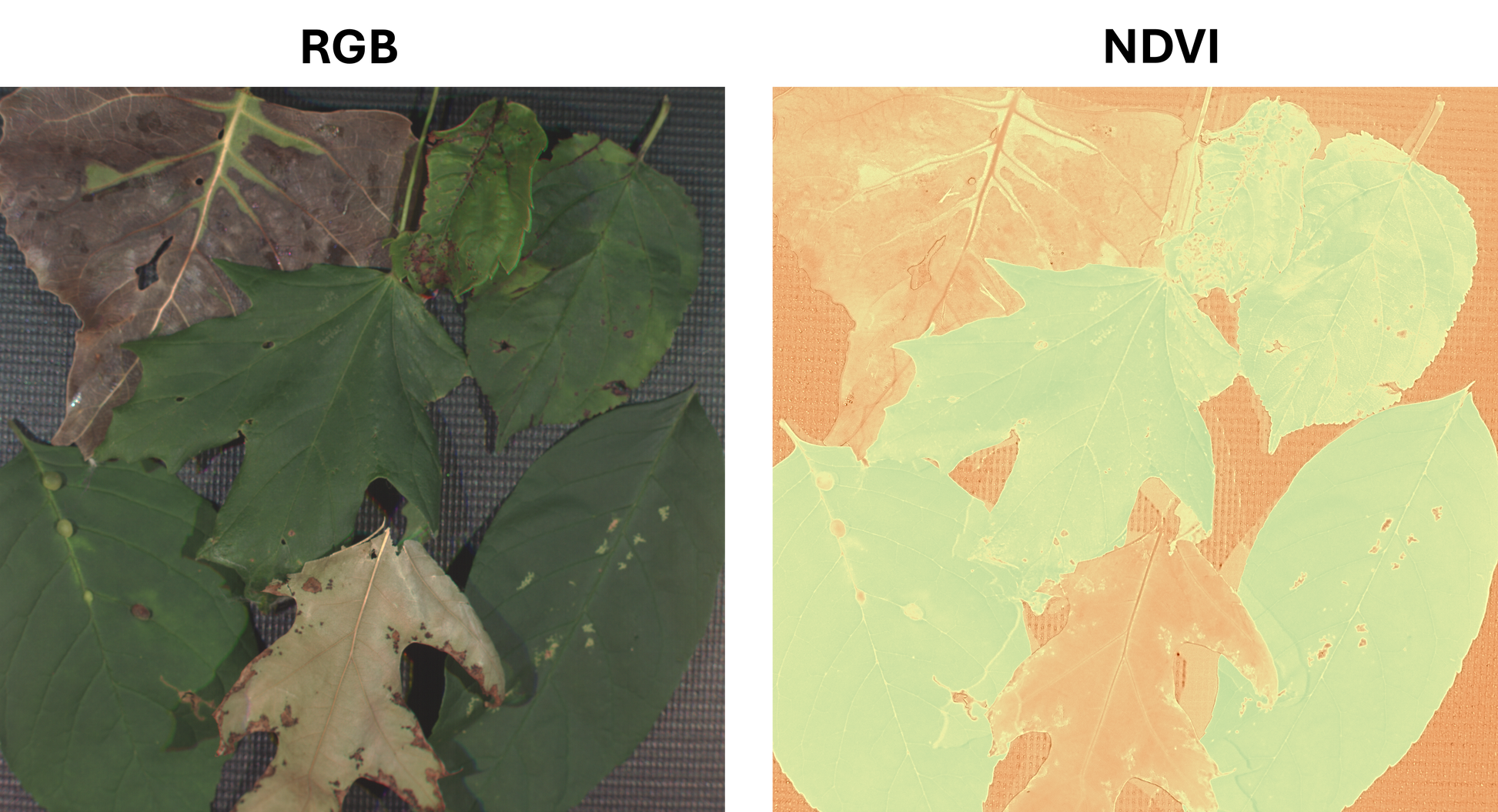Vegetation Imaging
Vegetation Imaging
Become a customer to access all support documents.
RGB-NIR imaging has been extensively used to estimate plant health. Healthy plants reflect more near-infrared (NIR) light and absorb more visible light, particularly in the red spectrum, due to the presence of chlorophyll. By comparing the reflectance values in the red and NIR bands, indices like the Normalized Difference Vegetation Index (NDVI) can be calculated, providing a clear indicator of plant health and vigor. This imaging technique helps detect stress, disease, and nutrient deficiencies early, enabling timely interventions for better crop management and yield.
Images of a number of leaves both visibly healthy and with defects were taken using a MSLED-RGBN-2-4 illuminator with four spectral channels (red (620 nm), green (520 nm), blue (470 nm), near-infrared (850 nm)) and a monochrome 4.2 MP camera, MSC2-M42-1-A. The images obtained using red, green and blue light were merged to form a typical color (RGB) image. The NDVI index was calculated by (Red-NIR)/(Red+NIR).
Images of each individual band reveal different spectral features of the leaves. Heathier leaves appear darker in the red channel due to higher absorption by chlorophyll and brighter in the NIR due to higher reflectance. The combination of this effect can be observed in the NDVI index image. The green parts indicate healthy vegetation, while red indicates stressed vegetation and/or man-made objects. Note how defects on leaves show up in red and yellow colors.
